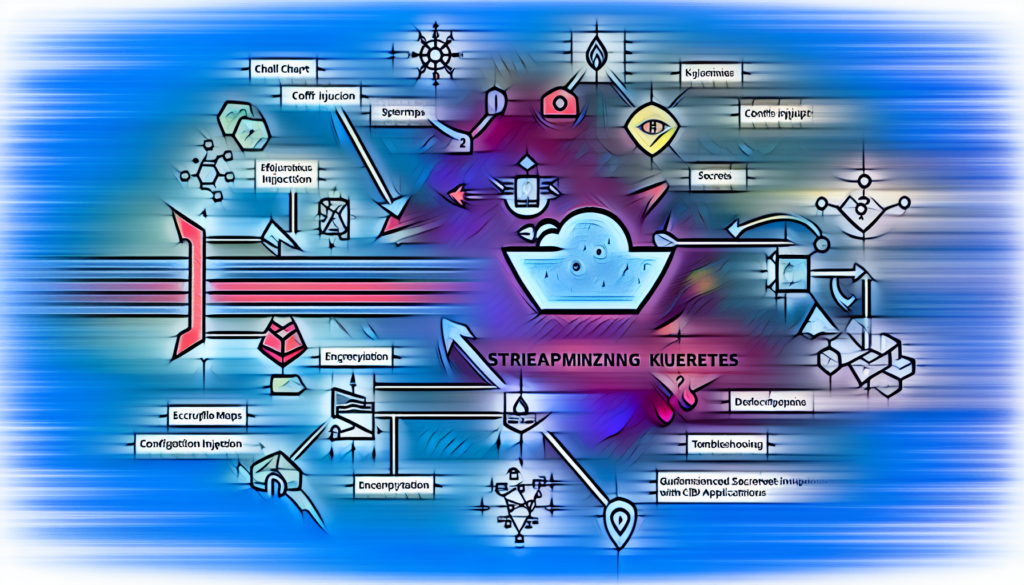Helm Chart Best Practices and Techniques for Kubernetes Deployments
Helm Chart Best Practices 2024: Structuring for Dynamic File Handling
As we step into 2024, the landscape of Kubernetes deployments continues to evolve, and with it, the need for robust Helm chart structures. Helm’s templating mechanisms are revolutionizing the way we handle dynamic file generation, as highlighted by a recent InfoQ article:
“[Helm] offers powerful templating mechanisms allowing engineers to generate any arbitrary combination of strings necessary throughout [their] builds.”
By embracing these best practices, developers can ensure that their Helm charts are equipped to handle the complexities of different deployment environments, from local development to production.
Customizable templates within Helm charts allow for a more streamlined application configuration process, accommodating the diverse scenarios that modern applications face.
Advanced Helm File Injection Techniques: Enhancing Kubernetes Configuration Management
Advanced file injection techniques are at the forefront of enhancing Kubernetes configuration management. The ability to pass large volumes of files efficiently is crucial, especially when dealing with static assets. A DevOps Stack Exchange discussion sheds light on this:
“[Using Volume Claims], no matter whether the underlying provider supports block devices or SSD drives, everything works fine!”
This approach circumvents the limitations imposed by some cloud providers and ensures a consistent deployment process across various infrastructures.
Utilizing volume claims in conjunction with helm hooks can be a game-changer for asset distribution among Kubernetes clusters, proving that advanced Helm file injection techniques are vital for modern DevOps strategies.
Secure Helm Secrets Handling: Encryption and Decryption in File Passing
Secure handling of secrets within Helm charts is a top priority for organizations. Encryption and decryption mechanisms must be in place to protect sensitive information during file passing. While the Helm community continues to explore various approaches, some advocate for external scripts to maintain granular control over the process:
“If you really wanted to keep track of every little detail yourself, you could write a script that generates the entire yaml manifest…”
This method, although more labor-intensive, provides a higher degree of security and customization for managing secrets within Kubernetes deployments.
It’s imperative for teams to adopt secure Helm secrets handling practices to safeguard their configuration management and maintain trust in their CI/CD pipelines.
Kubernetes CI/CD Pipeline Optimization: Real-World Examples with Advanced Helm Strategies
The optimization of Kubernetes CI/CD pipelines is a continuous effort that benefits greatly from advanced Helm strategies. Real-world examples demonstrate the effectiveness of these techniques in streamlining the deployment process. One such instance involves integrating Helm charts with GitHub Actions, as noted in the InfoQ article mentioned earlier.
By leveraging Helm’s capabilities within CI/CD pipelines, teams can achieve more efficient and reliable deployments, reducing manual intervention and potential errors.
Optimizing these pipelines is not just about speed but also about consistency and reliability, which are hallmarks of a mature DevOps practice.
Troubleshooting Helm File Injection Issues: Overcoming Common Challenges in Kubernetes Deployments
Troubleshooting is an inevitable part of managing Kubernetes deployments, and Helm file injection issues are no exception. Common challenges can arise from a variety of factors, including misconfigurations, environment discrepancies, and version incompatibilities.
Overcoming these challenges requires a deep understanding of Helm’s inner workings and the Kubernetes ecosystem. Teams must be prepared to tackle these issues head-on to maintain the integrity of their deployments.
Proactive monitoring, thorough testing, and a solid incident response plan are essential components in mitigating the impact of any Helm-related issues that may arise.
For more insights into Helm chart best practices and to leverage advanced Kubernetes deployment strategies, visit Bee Techy and contact us for a personalized quote. Our team of experts in Los Angeles is ready to help you optimize your Kubernetes configurations for success.
